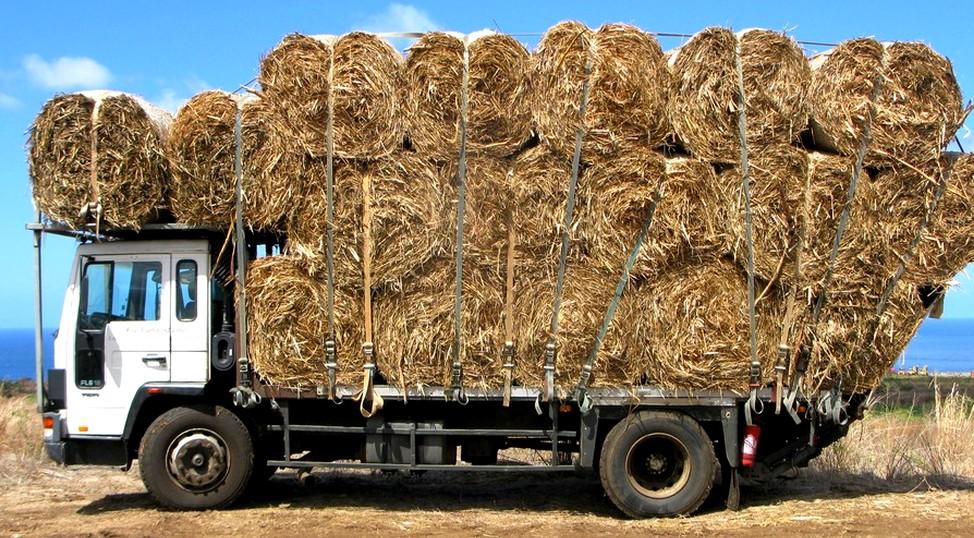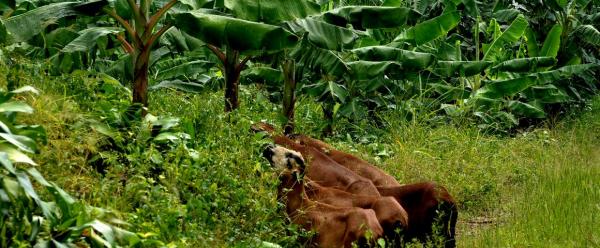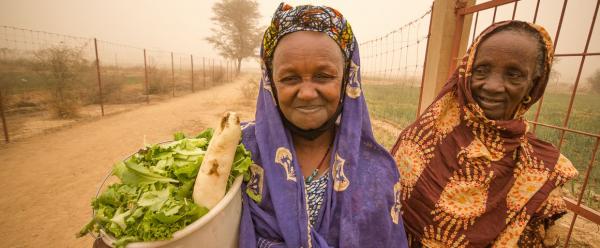Science at work 6 November 2025
- Home
- CIRAD news
- News
- Circular economy: turning waste into fertilizer
The circular economy: turning organic waste into fertilizer

Fostering a circular economy on the island
How can we optimize circular, sustainable biomass management? The GABiR project on agricultural management of biomass set out to tackle this question, which is particularly relevant in island territories like Réunion. The answer lies in supporting the structuring or emergence of agricultural recycling of the waste generated by farming and agrifood activities, such as livestock manure, green waste and crop residues. GABiR is coordinated by CIRAD and involves a range of partners*.
Almost 8000 players are concerned
The project is keen to involve a wide range of players, to ensure more rational biomass use on the island. Two years after its launch, the project members set out to obtain a snapshot of current biomass transfers and the players concerned. "We have almost finished this" , says Mathieu Vigne, who is coordinating the project with his colleague Jonathan Vayssières, "although the dynamism of the sectors concerned and the existence of an informal sector make it difficult to obtain an exhaustive list ". Almost 8000 players have been identified, in three sectors: agriculture, urban areas and industry.
Pinpointing suitable biomass
Of the biomass used or suitable for use in agriculture, that produced by the agricultural sector itself comes to more than a million tonnes, mainly in the form of manure, cane straw and feed straw. Agroindustrial by-products come to almost 900 000 tonnes (mainly bagasse). Lastly, urban waste comes to more than 300 000 tonnes (green waste, household organic waste and sewage farm sludge). These types of biomass are currently being studied to determine their potential for use in the crop and livestock sectors (dry matter and nutrient contents).
Working with those concerned to overcome the constraints
The initial diagnosis pinpointed a certain number of constraints on by-product recycling: competition between different types of use, high transport costs, regulation, social acceptance, lack of awareness, informal nature of exchange networks, etc. What remains is to identify local and regional solutions. A survey of various stakeholders produced a dozen or so concrete proposals involving the agricultural sector, industry and local authorities. They include three cases representative of the range of constraints and types of biomass, which are now being studied in more detail:
- The search for collective solutions to make better use of livestock manure in the light of substantial urbanization and regulatory constraints.
- Structuring of green waste/livestock manure co-composting operations in the South of the island, where most pork, rabbit and poultry farms are based.
- Establishment of a system of feed exchanges between livestock farmers all over the island.
Relaying local issues
The GABiR project also aims to pass on economic players' wishes, notably regarding topics the project will be unable to cover. To this end, a day of meetings open to the public on 5 November last brought together around a hundred people. The aim was to report on the progress made thanks to the project and foster exchanges between players on the island. In particular, it provided an opportunity to tackle representatives from the regional council about the range of initiatives and the need to pool those initiatives within a future platform. It also enabled stakeholders from the organic farming sector to highlight their specific constraints and requirements. The discussions resulted in a decision to set up a specific group within the project, tasked with building a programme of future debates and activities.
* Réunion Chamber of Agriculture, CRIPTIR, FRCA, INRA, Qualitropic, SAFER and University of Réunion.



























